OIL PEAK
 World’s energy
value has never been so huge as it is now. The use of commercial energy now
exceeds 200 million barrels of oil equivalent (BOE) each day and it is the
world’s largest industry. Energy is the world’s equivalent of oxygen to the
human body. Now it seems that the world is going to face serious problem with
peaking and decline of oil production. The peak of oil discoveries was reached
in the 1960s. This peak has to be followed by a peak in production, since we
can only produce what has been found before. Peak production was reached in
many countries e.g. in the USA (1970). Recent "members“ joining the club
of 50+ countries with declining production rates are UK (1999), Australia
(2000), Oman (2000) and Norway (2001).
World’s energy
value has never been so huge as it is now. The use of commercial energy now
exceeds 200 million barrels of oil equivalent (BOE) each day and it is the
world’s largest industry. Energy is the world’s equivalent of oxygen to the
human body. Now it seems that the world is going to face serious problem with
peaking and decline of oil production. The peak of oil discoveries was reached
in the 1960s. This peak has to be followed by a peak in production, since we
can only produce what has been found before. Peak production was reached in
many countries e.g. in the USA (1970). Recent "members“ joining the club
of 50+ countries with declining production rates are UK (1999), Australia
(2000), Oman (2000) and Norway (2001).
The production pattern during the life of any oil region can be divided into three phases: continual or increased production, flat (peak) production and decline of production. The production peak of each field is an inevitable fact. Today almost all large oil fields have already passed their max. production and are in decline. Many geologists who study world oil reserves vs. production believe that world oil supply will soon get into the turning point towards an irreversible decline. According to Dr. Campbell, who spent decades working as an international exploration geologist for major oil companies, world oil discovery peaked in the 1960’s and has declined steadily since. World is facing the situation when we produce four barrels for every one we discover. Clearly, this is an unsustainable situation since long-term discovery and production must be in balance to some degree. There is an imminent threat of oil peak ahead of us. But peak does not mean the world will run out of oil. Peaking does mean growth is over and steady decline is ahead.

PAST PEAKS
The geologist King Hubbert (former employee of Shell) predicted as early as in
1956 the peak of the US oil production to be reached around the year 1970. This
prediction was widely ignored at that time but later it turned out to be
correct. US oil supply peaked in 1970.
North Sea oil peaked in 1999 to 2001. Oil production in FSU (former Soviet Union) peaked in 1988 and recent growth is considered as the capturing of oil left behind. Iran’s great oil fields peaked in the 1970s. Most of them now produce 15% to 30% of peak rates. Oil production has peaked in more than 50 oil producing countries, including the USA and Great Britain. Conventional oil in Canada is also in steady decline now. China, which is just second behind to the US in oil consumption, was a net exporter of oil until 10 years ago and now imports almost one third of its own oil needs.
And the natural gas is peaking as well. North American natural gas peaked in 2001. Gas supply also peaked in Indonesia, Netherlands, U.K. and probably Russia.
USA
The production peak was reached in the USA in 1970. Growing oil production in
Alaska in the following years could only compensate for the decline of the old
fields for a short while. High oil prices stimulated enormous activity in the
early 1980s in order to bring new wells into production. This resulted in a
slight increase in the production of the “Lower 48” states. Nevertheless within
a few years the production then started to decline again at even higher rates
than before. The long-term decline trend was approaching the values one would
have expected from the experience of the 1970s. Alaska reached its peak more
than ten years ago. Texas passed its maximum thirty years ago. Today, Texas
produces no more than it did in the 1930s. The other states passed peak
production in the early 1970s and are declining year by year. Average oil
production per well has also declined. In Texas to about 6 barrels per day,
while in Pennsylvania – where the oil boom started 140 years ago – it is even
lower. These production rates can be compared with the generation of renewable
energy: an average oil well in Texas produces about the same amount of energy
as might be provided in the form of thermal energy by solar collectors of 1,800
m2 in size, i.e. less than 45 meters square.

UK
Oil production in UK peaked in 1999. The production of all the big fields has
been declining for many years, but for the first time in the year 2000 bringing
new fields into production could not compensate this decline. Since then total
production has also been decreasing. In the year 2000 production was 8 % lower
than in 1999; the year 2001 brought another reduction of 10 % compared to the
year before. The fact recognized also by Michael Meacher former UK environment
minister (1997 – 2003) who expressed his worries about upcoming oil peak in the
article which appeared in Financial Times (Jan 05, 2004). „Four months ago,
Britain's oil imports overtook its exports, underlining a decline in North Sea
oil production that was already well under way. North Sea oil output peaked at
about 2.9m barrels per day in 1999, and has been predicted to fall to only 1.6m
bpd by 2007. Today the world enjoys a daily production of 75m bpd (barrels per
day). But to meet projected demand in 2015, we would need to open new oilfields
that can give an additional 60m bpd. This is frankly impossible. It would
require the equivalent of more than 10 new regions, each the size of the North
Sea. The production of non-conventional crude oil has already been initiated at
enormous cost in Venezuela's Orinoco belt and Canada's Athabasca tar sands and
ultra-deep waters“.
What happened with the North Sea oil? Evidently giant and medium sized
fields declined fast and have not been compensated by the new discoveries.
Almost all new finds were small. Important thing is that that only few believed
the UK could peak. So the question is if the North Sea lesson will be a global
case study.
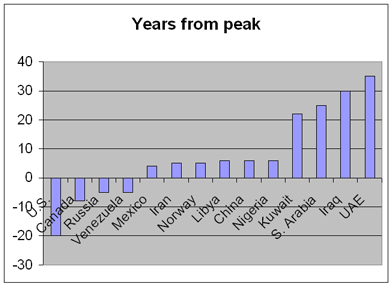
MIDDLE EAST
Ghawar is the world’s largest oil field, which was discovered in Saudi Arabia
in 1949. This oil filed accounts for the production of 55 to 60 percent of all
Saudi oil. Shaybah, Saudi Arabia’s last giant oil field was discovered in 1967.
The fear is that these elder oil fields may have already peaked and their
production loss will never be compensated by the new discoveries.
 The world has
assumed that Middle East oil is possibly inexhaustible, but major declines in
previously great oilfields have already occurred. The great Iranian oil fields
are typical examples. Recent Oman’s surprising production declines were also
unexpected. Peaking has always been a surprise. Russian peaking came suddenly.
Simmons & Company predicted North Sea oil peaked (1997-2000). Only few
thought that North American natural gas peak production was possible. Middle
East oil peak will be the biggest surprise. When Saudi Arabia’s oil output
peaks, the world has also peaked. Despite the fact that “peaking” has generally
been accepted a years after the event, oil and gas fields do peak, regardless
of where they are located.
The world has
assumed that Middle East oil is possibly inexhaustible, but major declines in
previously great oilfields have already occurred. The great Iranian oil fields
are typical examples. Recent Oman’s surprising production declines were also
unexpected. Peaking has always been a surprise. Russian peaking came suddenly.
Simmons & Company predicted North Sea oil peaked (1997-2000). Only few
thought that North American natural gas peak production was possible. Middle
East oil peak will be the biggest surprise. When Saudi Arabia’s oil output
peaks, the world has also peaked. Despite the fact that “peaking” has generally
been accepted a years after the event, oil and gas fields do peak, regardless
of where they are located.
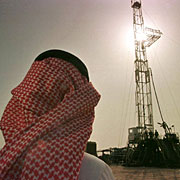
OIL PEAK EVERYWHERE
There are more and more countries which has been hit by the peak oil and falling production. Worldwatch Institute in their study State of the World 2005 observed that oil production is in decline in 33 of the 48 largest oil-producing countries. There are more other smaller countries which also passed their peak oil production. Following figure shows the most important oil-producing countries behind peak.

OIL DISCOVERIES
The crucial question is: Are the new supplies large enough to replace declines
in existing production? Probably not. The world used four times as much oil as
was newly found in 2008. The rate of discoveries of worldwide oil reserves is
steady declining. In 2000, there were 16 large discoveries of oil, eight in
2001, two in 2002, and none last year. The last two super giant oil fields
found were Prudhoe Bay (1968) with 15 to 20 Billion barrels and Samotlar (1967)
with the same volume of oil found. Moreover 95% of new oil discoveries are
small fields.
Descending Size Of Giant
Oilfields
|
|
Number Of Discoveries |
Average Current Production (Per Field) |
|
Bbls/Day |
||
|
Pre - 1950s |
19 |
557 000 |
|
1950s |
17 |
330 000 |
|
1960s |
29 |
242 000 |
|
1970s |
24 |
236 000 |
|
1980s |
15 |
176 000 |
|
1990s |
11 |
126 000 |
Total oil discoveries (excluding North America) for 2002 fell by 35 percent,
from 10.1 billion barrels in 2001 to 6.6 billion barrels. With total
world oil production for the year at 26.7 billion barrels, more than four
barrels were produced for every new barrel found.
Source : ASPO Newsletter No. 38 (Feb. 2004).
The year 2003 seems to be the first year since the beginning of the modern oil industry to have recorded no large oil discoveries at all. According to a recently published review by consultants IHS Energy. "One of the most significant concerns was that 2003 didn't produce large, unpredicted finds." Chris Skrebowski, Editor of Petroleum Review, described the year's exploration results as "little short of horrifying" noting that "We would probably have to go back to the early 1920s to find a year when fewer large oil discoveries were made."
Total oil discoveries from new fields have replaced only 40 percent of production since the mid-1990s. And all this cost huge amount of investment. Since 2001, the 10 largest oil companies together spent more on exploration than the present value of the discoveries they made. And natural gas discoveries follow the same pattern. In 2002 discoveries failed to replace annual production for the second year running.
SIGNS OF THE IMMINENT PEAK
PRODUCTION
There are several facts supporting the claims that the world is facing imminent
threat of the oil peak:
![]() The oil
industry is spending huge money and using all available technologies to find
new oil in unfavorable areas (like Arctic region, Deep Sea). This could be seen
as the industry’s admission of the fact that ever less oil is found at other
easier accessible places.
The oil
industry is spending huge money and using all available technologies to find
new oil in unfavorable areas (like Arctic region, Deep Sea). This could be seen
as the industry’s admission of the fact that ever less oil is found at other
easier accessible places.
![]() More oil
producing countries are reaching their peak of production in spite of very
favorable economic conditions like high prices of oil.
More oil
producing countries are reaching their peak of production in spite of very
favorable economic conditions like high prices of oil.
![]() Oil industry
spent billions of dollars just to keep production flat. Survey covering 145
companies (1996 - 2000) shows that 410 billion USD was spent for net production
decline. Big five oil companies spent 150 billion USD during 1999 – 2002 for 4%
growth (600,000 bpd).
Oil industry
spent billions of dollars just to keep production flat. Survey covering 145
companies (1996 - 2000) shows that 410 billion USD was spent for net production
decline. Big five oil companies spent 150 billion USD during 1999 – 2002 for 4%
growth (600,000 bpd).
![]() Combined
production peak of all countries outside OPEC occurred around the year 2000.
Combined
production peak of all countries outside OPEC occurred around the year 2000.
![]() Non-OPEC,
non-FSU supply has been flat for 7 years
Non-OPEC,
non-FSU supply has been flat for 7 years
![]() 120 giant
fields (mostly old) make up 47% of total world oil supply (14 old oil fields
make up 20%).
120 giant
fields (mostly old) make up 47% of total world oil supply (14 old oil fields
make up 20%).
![]() BP downscaled
its production goals three times within the year 2001.
BP downscaled
its production goals three times within the year 2001.
![]() Several large
oil companies are changing their reporting patterns and publish only their
total output with combined financial results for oil and gas. This policy
obscures the change in the production portfolio - a declining oil business and
a growing share of the gas production.
Several large
oil companies are changing their reporting patterns and publish only their
total output with combined financial results for oil and gas. This policy
obscures the change in the production portfolio - a declining oil business and
a growing share of the gas production.
![]() High-ranking
managers of Exxon (largest private oil and gas company) made several speeches
in which they informed that the whole industry is facing new and fundamental
problems. Exxon has also published a graph, which shows the historical records
of oil discovery which first was published by Colin Campbell and Jean
Laherrère. It shows the fact that peak discovery took place in the 1960. Exxon
admits the fact that discoveries declined in the last two decades despite
increased oil prices (The Future of the Oil and Gas Industry, Harry J.
Longwell, World Energy Vol. 5, No. 3, 2002).
High-ranking
managers of Exxon (largest private oil and gas company) made several speeches
in which they informed that the whole industry is facing new and fundamental
problems. Exxon has also published a graph, which shows the historical records
of oil discovery which first was published by Colin Campbell and Jean
Laherrère. It shows the fact that peak discovery took place in the 1960. Exxon
admits the fact that discoveries declined in the last two decades despite
increased oil prices (The Future of the Oil and Gas Industry, Harry J.
Longwell, World Energy Vol. 5, No. 3, 2002).

Problems with exploration
Professor Kjell Aleklett, president of ASPO:
For over 30 years, Wood Mackenzie has been providing analysis and strategic advice
to the world’s leading energy companies. During this time they have developed a
unique and unrivalled foundation of knowledge within the Energy Industry. They
are specially known for their analysis of the oil industry. Now in January 2004
they have released an horizon analysis titled “New thinking needed for
exploration?” The conclusions are with data since the mid 1990s:
![]() Only 3 out of 10
exploration wells have been successful.
Only 3 out of 10
exploration wells have been successful.
![]() Excluding the
giants of the deep-water zenith and Kashagan (1999 and 2000). The average
discovery size has been around 50 million barrels. This should be compared with
the daily production of 75 million barrels. Summing up the discoveries
for 2003 it looks to be around 20 million barrels per day. We are indeed
cutting a large piece of the reserve cake.
Excluding the
giants of the deep-water zenith and Kashagan (1999 and 2000). The average
discovery size has been around 50 million barrels. This should be compared with
the daily production of 75 million barrels. Summing up the discoveries
for 2003 it looks to be around 20 million barrels per day. We are indeed
cutting a large piece of the reserve cake.
![]() The average value
of discoveries has fallen. This is in accordance with the predictions of
Uppsala * Hydrocarbon Depletion Study Group, www.isv.uu.se/uhdsg.
The average value
of discoveries has fallen. This is in accordance with the predictions of
Uppsala * Hydrocarbon Depletion Study Group, www.isv.uu.se/uhdsg.
![]() The average value
of discoveries has fallen.
The average value
of discoveries has fallen.
![]() The majors
performed disproportionately well in 1999 and 2000 but less well before and
since.
The majors
performed disproportionately well in 1999 and 2000 but less well before and
since.
The summary of the report is that new field exploration has not replaced oil reserves.

One of the very interesting findings of the report is that the ten largest
western major oil companies during 2001 and 2002 lost money on
exploration.
Wood Mackenzie: “We believe that exploration cannot continue to be the main
growth engine for the majors as it has in the past.”
FUTURE DEMAND
Worldwide demand for oil is far stronger than many analysts believe. Even at
today’s oil price of nearly 35 USD we can see few efforts at conservation or
move towards renewable energy sources. In fact, many countries (China being the
best example) are experiencing record oil demand. Today two billion people
still use no oil and another 3 billion use very little oil. So the question is:
How solid is our energy future? Where will China and the others get its oil? China
was a net oil exporter during 1970s and 80s. It became a net oil importer in
1993 and its dependence on imported oil is steady growing. China, second
largest world oil consumer, currently imports 32% of its oil and is expected to
double the amount until 2010. A report by the International Energy Agency
predicts that by 2030, oil imports of China will equal imports of the USA
today.

There is no doubt that huge increases for oil imports will take part in China,
India, and other developing nations and that the 21st century will need far
more oil and gas if the world development will be based on fossil fuels like
oil and gas. Population is growing and current oil and gas use is still limited
to the “chosen few.” So the question is: How the demand will be met by the
supply?
NEW FRONTIERS
Fighting decline curves is the greatest challenge for the new technology, new
regions and non-conventional oil. Today it seems that if offshore and
non-conventional oil and gas cannot grow fast, the future of these fossil fuels
is grim. Oil recovery from ageing fields utilizing new technology is becoming
more and more important. New measures are often mentioned as a viable source of
increased future oil recovery and as a reason to blame forecasters for being
too pessimistic regarding future oil production. It is true that these measures
are widely used and have the potential to increase the oil production rate. But
the results of new technologies seem to lead only to faster declines. An
example - The Yates field - one of the largest US fields, which was found in
1926 in Texas and was exploited since 1929. From its peak production in 1970
the production rate has declined by more than 75%. In 1993 the new technology
of hot steam and chemicals injection was introduced to increase the production.
This measure was successful for less than 5 years. The decline afterwards was
even steeper, exceeding 25 % per year instead of 8.4 % as before. Today the
production rate is even below the level it would be without these measures.
Result - new oil field technology led to high rates of decline (15 to 50% a
year).
Another example with multi billion-dollar technology of gas injection to boost old fields is Oman’s Yibal oil field. The new technology was introduced in 1990 - after 30 years of water injection and pressure maintenance. In 1997 Yibal reached the peak. In 2001 production declined by 65%. The collapse was a total surprise for many experts.
NON-CONVENTIONAL OIL
Quite often we can hear the claims that the depletion of conventional oil
supply will be offset by the production from non-conventional sources, like oil
from tar sands (heavy oil). Scientists acknowledge abundant non-conventional
oil. But the oil production is costly and environmentally unfriendly. Oil sands
are now and will be important for some countries like Canada as a long-term
source of energy and income. But they will hardly be a source of oil as are the
world's oil wells today.

NATURAL GAS
Natural gas faces similar uncertainty as the oil. For years, most natural gas
was flared as the waste product. Now many experts believe that natural gas will
be the energy of the future - or at least of the 21st century. But the gas is
fossil fuel and like oil it will peak as well. Conventional natural gas in the
USA peaked in mid 1990s, and is now down to 20% - 30%. This decline reflects US
oil decline more than 30 years ago. More important for the world economy is
that 60% of current world gas base (US, Russia, Canada, UK) is in decline. It
is also interesting to see worldwide gas discoveries peaking only a few years
later than oil did, though worldwide interest in natural gas business increased
over the last two decades.
CRISIS OR A NEW START
It seems that the world has to have more energy and preferably needs cheap oil
to grow its GDPs. Global economy has enjoyed stable and low oil prices for
almost all of the past two decades but oil peak could make an ultimate end to
this.
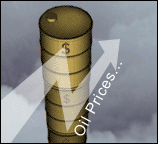 The world already experienced the
shock of shortage of cheap oil. During oil crisis in 1973 price of oil rose
from 3 USD to 5 USD per barrel on (Oct. 19th). By Christmas Eve it reached
almost 12 USD. It was described as the “The worst crisis to the free world
since World War II.” (Henry Kissinger in his Memoirs). All what happened was
just a 5% imbalance between demand (great) and supply (low). Evidently if
supply ever becomes even 1% less than demand, a crisis is triggered and if it will
last longer the impact on economy will be immediate and drastic. Oil peak seems
to be the ultimate trigger for another world economy crisis.
The world already experienced the
shock of shortage of cheap oil. During oil crisis in 1973 price of oil rose
from 3 USD to 5 USD per barrel on (Oct. 19th). By Christmas Eve it reached
almost 12 USD. It was described as the “The worst crisis to the free world
since World War II.” (Henry Kissinger in his Memoirs). All what happened was
just a 5% imbalance between demand (great) and supply (low). Evidently if
supply ever becomes even 1% less than demand, a crisis is triggered and if it will
last longer the impact on economy will be immediate and drastic. Oil peak seems
to be the ultimate trigger for another world economy crisis.
Experts predict that oil production will peak and that crisis will come
again when half of the oil reserves will be used. This prediction is
quantitatively unquestionable. But the question of when the peak will occur
depends on uncertain numbers. The so-called proven oil reserves as reported by
various countries and companies are often just guesses and probably not honest
guesses. Statistics shows that oil reserves have almost continuously increased
for more than 40 years, though each year about 25 Gb or 2 % of known reserves
are removed by production. Oil companies frequently publish information and
scientific studies on the future availability of oil. But the oil industry has
a natural financial interest in doing this:
![]() Announcement of
diminishing resources could have negative impact on consumers, shareholders and
investors (redirection of their investments into new business).
Announcement of
diminishing resources could have negative impact on consumers, shareholders and
investors (redirection of their investments into new business).
![]() For the oil
business is the best if consumers and shareholders would stay loyal to oil even
at declining production rates and rising prices. This would bring the highest
earnings for them at minimum costs. So the best method is to convince the
consumer that any current problems are only temporary – and thus to keep them
dependent on oil even in worsening times.
For the oil
business is the best if consumers and shareholders would stay loyal to oil even
at declining production rates and rising prices. This would bring the highest
earnings for them at minimum costs. So the best method is to convince the
consumer that any current problems are only temporary – and thus to keep them
dependent on oil even in worsening times.
ECONOMICAL VS. GEOLOGICAL
POINT OF VIEW
Today's discussion of future oil and gas supply is dominated by two opposing
positions. Economists base their knowledge mainly on information coming from
the oil companies. They usually argue that market mechanisms will guarantee
future discoveries and production rates. Many of them believe that also in the
long-term supply shortages can be avoided. According to the economical theory
price increases will happen only for short times and market forces and the new
technology will lead the new equilibrium between supply and demand.
In contrast to them geologists base their knowledge more on the physical and
mainly geological view. They argue that the historical peak in discoveries has
to be followed by the peak of production. Several of these analysts have many
years of personal experience in oil exploration with large oil companies. ”Geologists
look for oil, engineers produce oil, and economists sell oil. Beware of
economists who tell you how much is there.“ Colin J. Campbell, geologist.
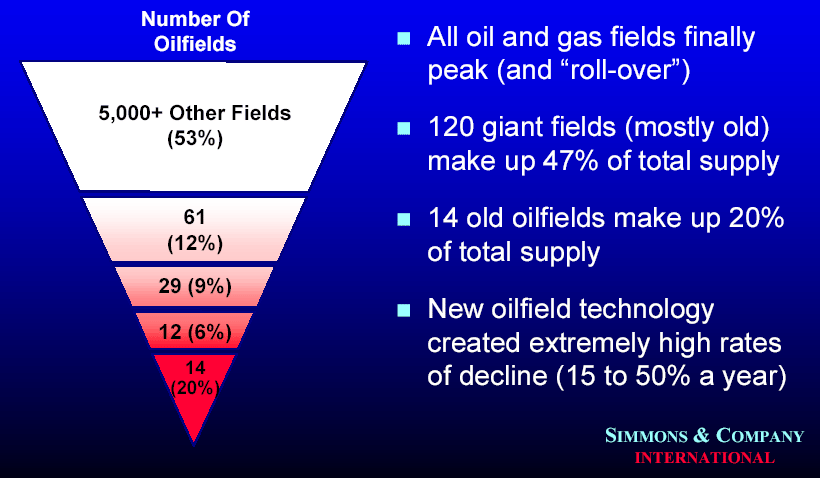
OIL SHORTAGE AFTER 2015?
According to many experts global oil supplies could have a problem with meeting
growing demand after 2015. While it is expected that several new productions
will enter the market over the next, the volumes expected from these projects
thereafter are likely to fall well below requirements. All known projects
with estimated reserves of over 500 million barrels of oil and the claimed
potential to produce over 100,000 barrels per day were analyzed. These
projects account for about 80 percent of the world's oil supplies. The volumes
of new production beyond 2015 will likely fall short of the combined need to
replace lost capacity from depleting older fields and satisfy continued growth
in world demand.
Estimates of the date of peak global production vary with some experts saying it already may have occurred as early as the year 2005 (conventional oil). Nevertheless the oil peak is inevitable and it does not matter if it will come in this decade or the next. Oil is fossil fuel and peak production is the fate of all of fossil fuels. The crucial question is if the world has the “Plan B” (or trap door) if oil and gas peak and their prices will inevitably rise. Now it seems that if the world ran short of oil and gas, the future forever growing population could be quite bad.
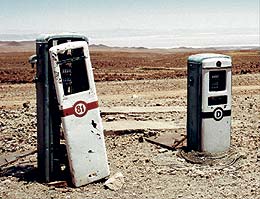
RENEWABLE ENERGY IS THE
ANSWER
In 2008, oil demand reached 84 million barrels per day. Natural gas demand
exceeded 45 million BOE/d (barrels of oil equivalent per day). Together they
account for 60% of a 3 trillion USD energy business or 1.8 trillion USD of
value per year. According to a report from the International Energy Agency the
world's increasing demand for oil will require total investments of over 3
trillion USD - or more than 100 billion USD a year by 2030. Estimating that
worldwide demand for oil would reach 120 million barrels a day by 2030, up from
80 million barrels now, the agency's World Energy Investment Outlook 2003
claims that three quarters of the projected investment will be needed to offset
the decline in production from existing fields and the remainder will be needed
to meet rising demand. Trillions of dollars for shrinking supplies and with
inevitable economy crises ahead.
If we are looking far into the future we can say that the world needs the energy for at least 10 billion people. At minimum we need 10 Terawatts (150 MBOE/day) from clean and sustainable energy sources by 2050. Do we have the solution for this problem? Yes we do. Renewable energy is the answer. There is 165,000 TW of sunlight hitting the earth every day. There is technology utilizing this source in place. What is needed is the political leadership and willingness to redirect the money allocated for fossil fuels towards renewables. We know that we have to do this. We need the revolution in energy sector. So the question is: What we are waiting for? An energy crisis? Global climate change? Wars for the last oil reserves? Or just a new way of thinking and a new administration?